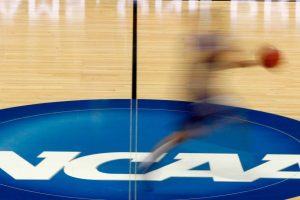NCAA takes another blow in court ruling on name, image and likeness

The NCAA’s legal problems regarding its limits on compensation for college athletes continued Thursday, when a federal judge denied its request to dismiss a lawsuit that not only challenges any limits on athletes’ ability to make money from their name, image and likeness, but also brings into play the prospect of athletes getting money from college sports TV rights fees.
The decision by U.S. District Judge Claudia Wilken comes just days after the Supreme Court unanimously ruled in the Alston antitrust case that the NCAA’s rules on athlete compensation are subject to detailed antitrust analysis, and such an analysis showed that the association’s limits on education-related benefits for athletes violate the law.
Wilken also oversaw the district-level proceedings in the Alston case and in the Ed O’Bannon antitrust case.
Her ruling also comes as the NCAA appears headed toward a temporary solution regarding college athletes’ ability to make money from their name, image and likeness (NIL) that will involve many schools setting their own individual policies on the matter, two people familiar with the association’s deliberations told USA TODAY Sports on Wednesday.
Thursday’s decision will give further urgency to the NCAA’s efforts to seek a bill from Congress that would override the array of state NIL laws that have been enacted over the past two years and give it protection from legal challenges to its athlete-compensation rules. It wants a bill to be worded in a way that would retroactively end the case at issue in Thursday’s ruling.
The case was brought on behalf Arizona State swimmer Grant House and Oregon women’s basketball player Sedona Prince and is being directed by the same law firm that brought the Alston case. In addition asking that the NCAA be prevented from having association-wide rules that “restrict the amount of name, image, and likeness compensation available” to athletes, the suit also seeks unspecified damages based on the share of television-rights money and the social media earnings the plaintiffs claim athletes would have received if the NCAA’s current limits on NIL compensation had not existed.
Such a damages award would be in the hundreds of millions of dollars and, under antitrust law, the basic award would be tripled.
In seeking dismissal, the NCAA argued, in part, that the new case was essentially the same as the Alston and O’Bannon cases that already had been decided. However, Wilken wrote that the new allegations. “which the Court must construe in (the plaintiffs’) favor at this juncture, raise the reasonable inference that material differences exist” between the new case and the Alston and O’Bannon cases.
Among those differences, the plaintiff allege, is that the NCAA has "admitted that restrictions on student-athlete compensation should be loosened or eradicated," and Wilken ruled that she can take such allegations into consideration in the context of whether to dismiss the case at this stage.
Wilken also noted that while the NCAA argues that the restrictions on athlete compensation are necessary to preserve fan interest in college sports, the plaintiffs allege the NCAA has “granted hundreds of waivers to student-athletes to profit from or use their NIL in contravention of the rules challenged here, and consumer demand for college sports has not decreased.”
She specifically cited the plaintiffs’ allegation that the NCAA granted a waiver to Notre Dame women’s basketball player Arike Ogunbowale to participate in ABC’s Dancing With the Stars “and to accept as much as $325,000 if she won.”
More critically for the NCAA, its conferences and schools, Wilken's ruling showed she is willing to consider arguments that college athletes can make a claim that should be able to get money from college-sports TV contracts. The NCAA has argued that the law does not recognize athletes rights to claim that they should be compensated for the use of their NIL in live game broadcasts.
However, Wilken wrote that such an argument, at this stage of the case, is irrelevant.
The plaintiffs' "allegations are sufficient to raise the reasonable inference that competition among schools and conferences would increase in the absence of the challenged rules, and that this increased competition would incentivize schools and conferences to share their broadcasting and other commercial revenue with student-athletes even if the student-athletes lacked publicity rights in broadcasts. These allegations are sufficient to claim injury in fact at this juncture."
Follow colleges reporter Steve Berkowitz on Twitter @ByBerkowitz
Source: Read Full Article
